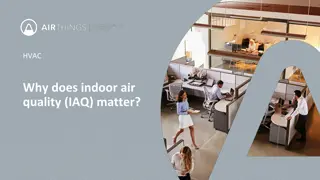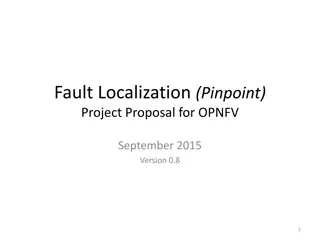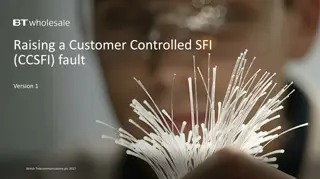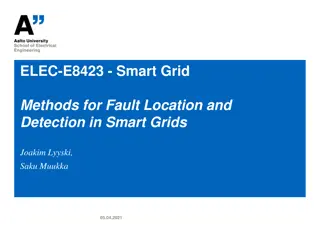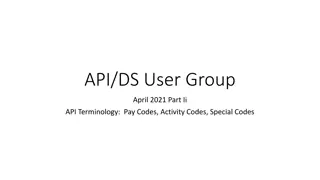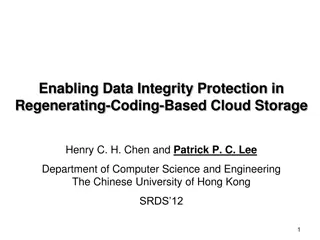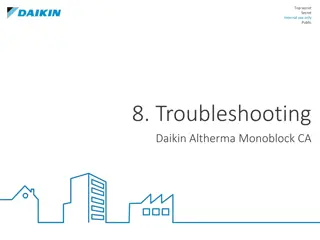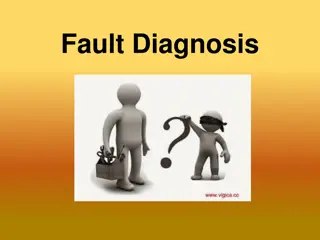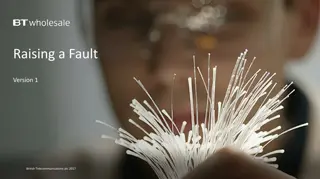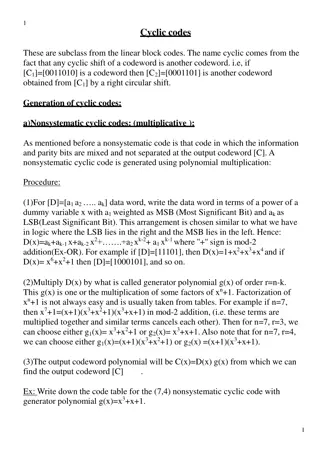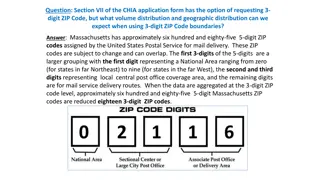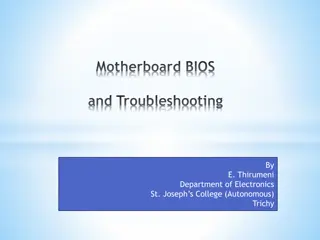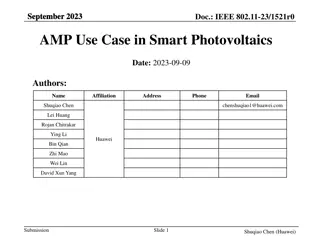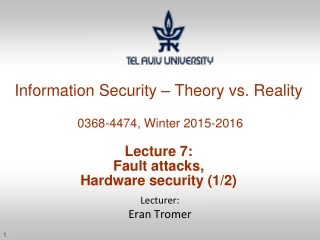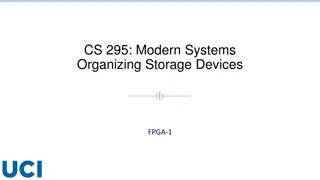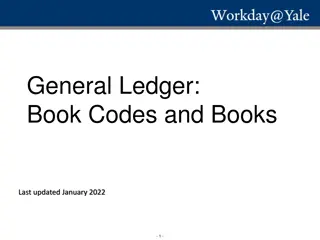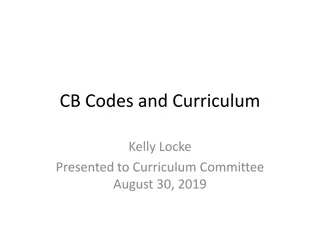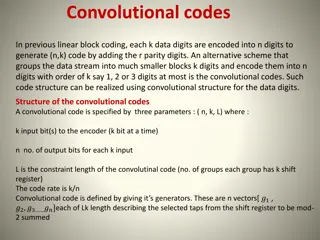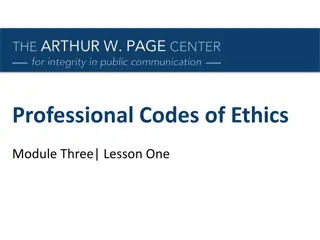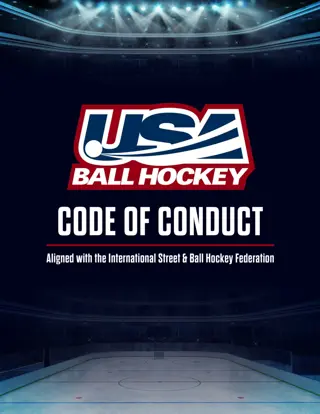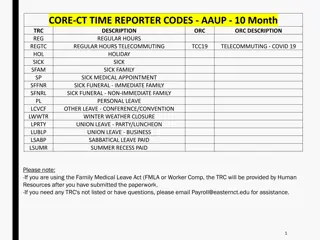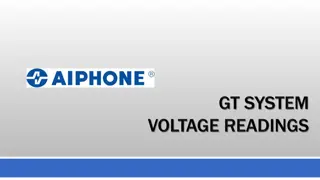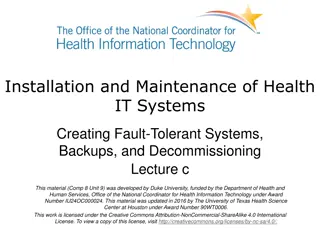HVAC Fault Codes Troubleshooting Guidelines
This guide provides troubleshooting steps for common HVAC fault codes including room temperature sensor malfunction, high and low-pressure protection, communication faults, and more. Each section includes indications, causes, and solutions to help identify and resolve issues effectively.
Download Presentation

Please find below an Image/Link to download the presentation.
The content on the website is provided AS IS for your information and personal use only. It may not be sold, licensed, or shared on other websites without obtaining consent from the author. Download presentation by click this link. If you encounter any issues during the download, it is possible that the publisher has removed the file from their server.
E N D
Presentation Transcript
Fault Codes & Troubleshooting Guidelines Fault Codes & Troubleshooting Guidelines
INDICATION: Cutting down the power first when any exceptions happened CONTANTS 1 6 Room temperature sensor malfunction (E2) 1 6 High pressure protection(F3) 2 7 The evaporator temperature sensor malfunction (E3) 2 7 Low pressure protection(F4) 3 8 The condenser temperature sensor Malfunction (E5) 3 8 Exhaust temperature protection(F8) 4 9 Communication fault between indoor and outdoor(E1) 4 9 The water level protection (F5) 10 5 10 EEPROM communication malfunction (P6) 5 Phase fault protection(F9) TROUBLESHOOTING GUILDLINES
INDICATION: Cutting down the power first when any exceptions break out 1. Room temperature sensor malfunction (E2) 1. Check the interface of senor in the PCB When it is loose, please install it again. TROUBLESHOOTING GUILDLINES
INDICATION: Cutting down the power first when any exceptions happened 1. Room temperature sensor malfunction (E2) 2. Check the statue of sensor If it s abnormal, you should replace the temperature sensor. check standard: when room temperature of 25 5k Measure: As showing right 1. Adjusting the multimeter for resistance detection. 2. Contacting to connector using two feet of multimeter. 3.If it has been done as normal after step1&2, you need to replace the electronic control board. , the resistance is multimeter TROUBLESHOOTING GUILDLINES
INDICATION: Cutting down the power first when any exceptions happened 2. The evaporator temperature sensor malfunction (E3) Same as above 3. The condenser temperature sensor malfunction(E5) Same as above TROUBLESHOOTING GUILDLINES
INDICATION: Cutting down the power first when any exceptions happened 4. The water level protection (F5) Ceiling-floor unit and Duct unit We set the water level switch as the state of short circuit in PCB board due to no condensate pumps equipped. When fault of F5 emerged, you have to check the PCB board to assure if there are something wrong of water level switch. Checking for whether the water level switch is shorted. TROUBLESHOOTING GUILDLINES
INDICATION: Cutting down the power first when any exceptions happened 4. The water level protection (F5) Cassette unit The cassette unit is configured with water level switch that connects with water pump. To ensure the condensate drain pump working well, please do as follow steps. 1. Checking the power of water pump. 2. Checking the plug contact between water pump and water level switch. 3. Checking the drain outlet of water pump. 4. Checking the water pump When power supply and drain outlet is normal, if there still some problems of drainage, the pump have to be replaced 5. Checking for whether water level switch can work normally Measuring the resistance of water level switch. As PINs of multimeter, the display of resistant means normality and infinity means anomaly. If the pump can work normally but the water switch Is at a disconnected state, the water level switch must be broken. 6. If all above are OK, change the PCB. TROUBLESHOOTING GUILDLINES
INDICATION: Cutting down the power first when any exceptions happened 5. Outdoor protection Four kinds of outdoor protection(For RS485) 1 Phase sequence protection(F9) NOTE: For 220V communication type unit, the outdoor code is F2, which may cause by the four reasons. 2 High pressure protection(F3) 3 Low pressure protection(F4) 4 Exhaust temperature protection(F8) TROUBLESHOOTING GUILDLINES
INDICATION: Cutting down the power first when any exceptions happened Phase sequence protection(F9) 1. Checking the power wires to see whether they are 1. Checking the power wires to see whether they are wrong. wrong. 2. If not, change the PCB. 2. If not, change the PCB. Two lamps bright tighter means normally Only green lamp bright means abnormal. TROUBLESHOOTING GUILDLINES
INDICATION: Cutting down the power first when any exceptions happened High pressure protection(F3) 1. Weather the connector and wire are loose, If yes, fix them. 2. Check the high pressure switch weather it is well, If not, change it. 3. Check the PCB, if it damage, change it. 4. If it still not solve, it may be too more refrigerant in the system or block. TROUBLESHOOTING GUILDLINES
INDICATION: Cutting down the power first when any exceptions happened Low pressure protection(F4) 1. Weather the connector and wire are loose, If yes, fix them. 2. Check the low pressure switch weather it is well, If not, change it. 3. Check the PCB, if it damage, change it. 4. If it still not solve, it may be too less refrigerant in the system. TROUBLESHOOTING GUILDLINES
INDICATION: Cutting down the power first when any exceptions happened Exhaust temperature protection(F8) 1. Weather the connector and wire are loose, If yes, fix them. 2. Check the discharge temp. sensor weather it is well, If not, change it. 3. Check the PCB, if it damage, change it. 4. If it still not solve, it may be too less refrigerant in the system. TROUBLESHOOTING GUILDLINES
INDICATION: Cutting down the power first when any exceptions happened 6. Communication failure (E1) 1. Checking the wired remote control`s connection. The wired controller have to match the PCB of indoor unit. 2. Checking the cable of wired controller for disconnected, and making sure the plug is in good contact. 3. If the fault still existing, please replace the wired remote control; and if it is still the same after replace the wired controller, then you should replace the indoor electric control board. TROUBLESHOOTING GUILDLINES
INDICATION: Cutting down the power first when any exceptions happened 7. EEPROM communication malfunction(P6) 1. Check the EEPROM chip whether it is plugged in. 2. Powering off and re-powering on to see if it is normal. 3. If the fault still existing, please replace the indoor electric control board. TROUBLESHOOTING GUILDLINES


